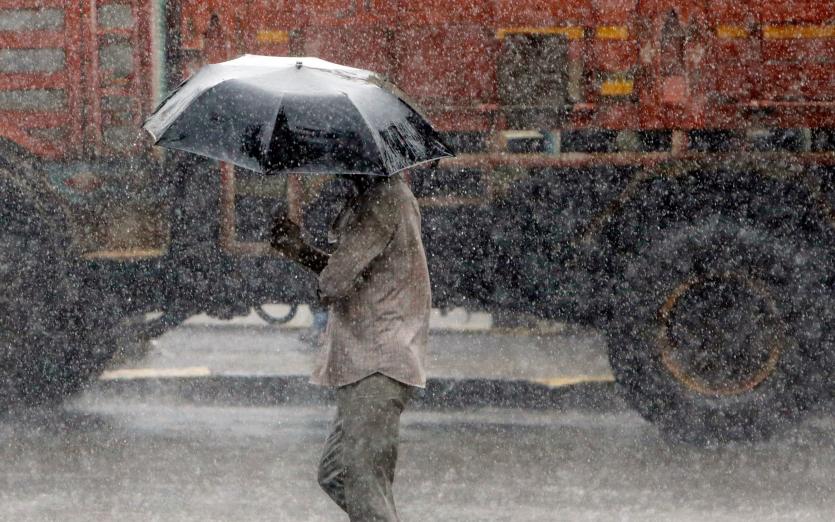A man walks with an umbrella in the rain in Mumbai /AP
 JULY 2nd 2019
JULY 2nd 2019
By Patryk Krych | The World Daily
India’s Monsoon Rains Bring Rise to Yearly Chaos
Wall collapses that killed 27 people in India on Tuesday were caused by heavy monsoon rainfall, as a second day of poor weather conditions disturbed rail and air traffic in Mumbai; the financial capital. This prompted officials to shut down schools and offices for the time being, though several markets remain open for business.
Running from June to September, every monsoon season experience in India is typically met with some degree of fatal incidents as a result, be it a cause of buildings and/or walls collapsing because of rainfalls weakening their foundations, or because of the increase in mudslides and breaking down of poorly built structures.
A wall was brought crashing down on shanties built on a hill slope in Malad when the monsoon came and the rains came roaring down. Malad is a western suburb of Mumbai, where such fatalities are nearly regular at this time of year. According to a fire brigade official, 18 people were recently killed as a cause of these structural imperfections in the rain. “Rescue work is still going on. So far we have rescued more than two dozen people,” the official said.
A school wall had also collapsed in the city of Kalyan, located 42 km North of Mumbai, and causing the death of three people. The monsoon rains were also the cause – and despite being sought out and expected for their nourishment after long draughts, their danger cannot be underestimated. In the nearby Western city of Pune, for example, according to a fire brigade official, another six people had been killed due to yet another wall collapse on Tuesday, soon after a similar incident on Saturday killed 15 people.
Despite large parts of the city of Mumbai often struggling to cope with annual monsoon rains and dealing with the damages, the city is looking to turn itself into a global financial hub. The city no doubt has certain structural vulnerabilities that it would need to tend to if there is hope to make this the case – such as the widespread construction and garbage-clogged drains and waterways that make it progressively susceptible to damages and floods.
Streets were flooded in Mumbai over the course of 24 hours, where more than 300mm of rain had fallen in some areas of the city. Streets as well as railway tracks were affected, imposing the suspension of certain suburban train services, forcing many millions of commuters to find alternate routes to their workplaces.
Authorities called for a holiday for government offices and educational institutions in light of multiple weather officials forecasting intermittent heavy showers and predicting that extremely heavy rainfall will have yet to end. City authorities said on Twitter that “Rain is expected to remain intense even today. We request you to stay indoors unless there’s an emergency.”
An airport spokeswoman said that India’s second biggest main runway at Mumbai airport had to see a shutdown from midnight, after a SpiceJet flight overshot the runway while landing due to the rainfalls. The secondary runway remains operational, but regardless of this, 55 flights had to be diverted and another 52 were cancelled, she added.
By Patryk Krych | The World Daily






